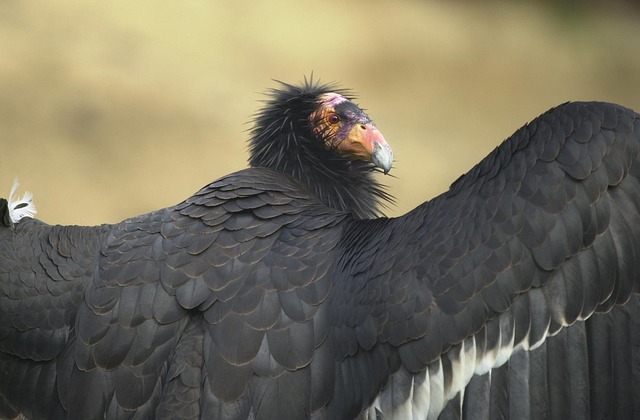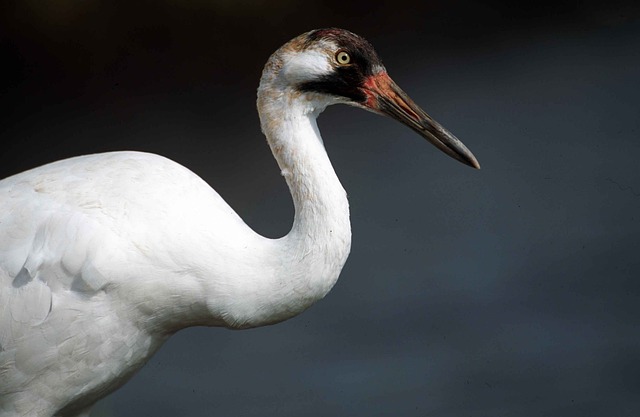
North America is home to a remarkable diversity of avian species, ranging from the majestic eagles and hawks to the colorful songbirds that brighten our skies. However, amid this abundance, there are a select few birds that stand out as rare jewels, captivating birdwatchers and conservationists alike. In this article, we explore the rarest birds in North America, highlighting their unique characteristics, habitats, and the importance of preserving their fragile populations.
1. California Condor (Gymnogyps californianus):
The California Condor, North America’s largest land bird, is a critically endangered species that once teetered on the brink of extinction. With only 22 individuals left in the wild in the 1980s, dedicated conservation efforts, such as captive breeding and habitat protection, have led to an increase in their numbers. However, they remain an extremely rare sight, soaring over the vast landscapes of California, Arizona, and Utah.
2. Whooping Crane (Grus americana):

With striking white plumage and a resonant call, the Whooping Crane is one of the most iconic and rarest birds in North America. Once on the brink of extinction with only 15 individuals in the 1940s, conservation initiatives have slowly helped increase their numbers. Today, around 600 individuals, including both wild and reintroduced populations, migrate annually between their breeding grounds in Canada and wintering sites in Texas and Florida.
3. Kirtland’s Warbler (Setophaga kirtlandii):
The Kirtland’s Warbler is a small, songbird known for its bright yellow plumage and intricate song. Found mainly in young jack pine forests of Michigan and Wisconsin, this endangered species faced severe decline due to habitat loss and nest predation. However, conservation efforts, including habitat management and public awareness, have contributed to their slow recovery, with populations showing positive growth in recent years.
4. Ivory-billed Woodpecker (Campephilus principalis):
One of the most elusive and controversial birds in North America is the Ivory-billed Woodpecker. Long believed to be extinct, there have been occasional unconfirmed sightings of this majestic bird in the southeastern United States. Despite extensive efforts to locate and confirm their presence, the Ivory-billed Woodpecker remains a mysterious and enigmatic figure, captivating the imagination of bird enthusiasts.
5. Eskimo Curlew (Numenius borealis):
The Eskimo Curlew is a critically endangered migratory bird that was once a regular sight during its annual migration from its Arctic breeding grounds to South America. However, uncontrolled hunting during the 19th and early 20th centuries led to a catastrophic decline in their numbers. Today, the Eskimo Curlew is considered possibly extinct, with no confirmed sightings for decades. Despite ongoing efforts to find the bird, the chance of observing one in the wild remains exceedingly slim.
6. Florida Grasshopper Sparrow (Ammodramus savannarum floridanus):
Endemic to the dry prairies of central and southern Florida, the Florida Grasshopper Sparrow is one of the most endangered birds in the United States. With only a few dozen individuals remaining, the species faces numerous threats, including habitat loss and fire suppression. Conservationists are working tirelessly to protect their remaining habitats and implement captive breeding programs to ensure their survival.
7. Northern Aplomado Falcon (Falco femoralis septentrionalis):
Once common across the southern United States, the Northern Aplomado Falcon experienced a dramatic decline in the 20th century due to habitat loss and pesticide use. Today, conservation efforts have led to successful reintroductions in parts of Texas and New Mexico, offering hope for this rare raptor’s recovery.
8. Gunnison Sage-Grouse (Centrocercus minimus):
The Gunnison Sage-Grouse is a unique and isolated subspecies of the Greater Sage-Grouse found in the southwestern United States. Their fragmented and limited populations face threats from habitat loss, human development, and predation. Conservation strategies involve collaboration between landowners, governmental agencies, and conservation groups to protect their habitats and facilitate breeding success.
9. Mexican Spotted Owl (Strix occidentalis lucida):
Native to the southwestern United States and northern Mexico, the Mexican Spotted Owl is an endangered subspecies of the Spotted Owl. Primarily found in old-growth forests and canyons, their populations have declined due to habitat loss and competition with other owl species. Efforts to protect their habitats and reduce disturbances in their range are critical to their survival.
10. Bachman’s Warbler (Vermivora bachmanii):
Considered one of the rarest birds in the world, Bachman’s Warbler has not been confirmed since the 1980s. Historically found in the southeastern United States, the species faced habitat loss and, possibly, the impact of hurricanes on its breeding grounds. Despite numerous searches, this small, elusive warbler remains one of North America’s most sought-after but rarely observed birds.
Preserving the rarest birds in North America is not only a matter of maintaining biodiversity but also a responsibility to protect the fragile ecosystems they inhabit. Conservation efforts, habitat restoration, and public awareness play crucial roles in ensuring that these unique and captivating birds continue to grace our skies for generations to come. By coming together and dedicating our resources, we can help secure the future of these avian wonders and preserve the rich tapestry of life they represent.





